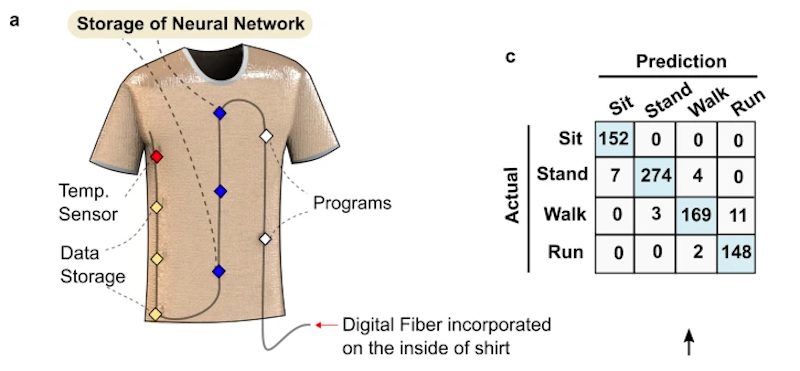
[Yoel Fink] and his team at MIT have announced their creation of a fiber that can sense and store data. In addition, they can use data from a shirt made of the material to infer the wearer’s activity with high accuracy. The fiber contains hundreds of microscale silicon chips into a preform used to create a polymer fiber that connects the chips using four 25 micron tungsten wires. You can read the paper directly in Nature Communications.
The fiber contains temperature sensors and enough memory (24CW1280X chips) to store a short movie for two months without power. It also contains 1,650 neural network elements, which means the fiber can train to infer activity itself without additional help.
This sounds imaginative, but perhaps not yet practical. Right now, the fiber can survive being washed at least ten times and requires an external device and — presumably — external power. However, perhaps it is a glimpse of things to come.
Even if you aren’t interested in wearables, the creating of an ultra-tiny serial bus is interesting. It is also interesting to note that they use CNC milling to form the preform with the wire channels and other necessary features. We doubt too many Hackaday readers will want to try producing something like this, but we could see a lot of people wanting to purchase it and use it for different wearable projects.
We wonder if, one day, your clothes will have something like this in them for control and muscle fabric to allow them to reconfigure themselves. If sewing isn’t your bag, you might try 3D printing your electronic enclosures on your clothes.
0 Commentaires